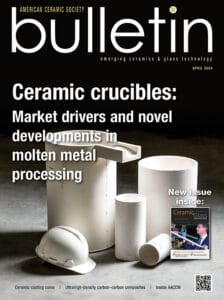Geopolymer is an inorganic aluminosilicate polymer made from high shearing a powder and liquid into a low viscosity paste which can set under ambient conditions into a solid amorphous ceramic. It is composed of calcined, amorphous aluminosilicate clay powder such as kaolinite, and “water glass” or sodium, potassium or another Group I metal metasilicate. Geopolymer has a composition centered at M2O•Al2O3•4SiO2 xH2O where x varies between 7-12 depending on particle size and specific surface area of the aluminosilicate source. While cements are based on a calcium silicate hydrate (CSH) binder phase, alkali activated, cementitious materials can also be made from waste products such as Class F fly ash and amorphous ground granulated blast furnace slag which is a source of aluminum, silicon and calcium as well as other impurities. When alkali hydroxide and alkali silicate liquids can be mixed with these starting powders, they produce a solid material which is a mixture of CSH (e.g. 55 wt%) and a minor amount of geopolymer (15%), as determined by NMR of selectively leached components of the product phase. Such composites can have significantly superior mechanical properties compared to OPC, as well as improved chemical durability depending on their geopolymer content.
Proposed Session Topics
- Synthesis, processing, microstructure
- Characterization and composition
- Durability
- Mechanical and thermal properties
- Composites
- Infrastructure and construction materials
- Other indigenous resource materials
- Other inorganic analogues
Organizers
- Waltraud M. Kriven, University of Illinois at Urbana-Champaign, USA, kriven@illinois.edu
- Ghassan Al-Chaar, US Army Construction Engineering Research Laboratory (CERL), USA
- Gregor Gluth, BAM Federal Institute for Materials Research and Testing, Germany
- Dechang Jia, Harbin Institute of Technology, China
Subscribe to Ceramic Tech Today

Don’t miss the latest ceramic and glass materials news. Receive the CTT newsletter to your email three times a week by subscribing at this link.
Subscribe to Ceramic & Glass Manufacturing Weekly

Don’t miss the latest ceramic and glass business news. Receive the C&GM Weekly newsletter to your email every Monday by subscribing at this link.


